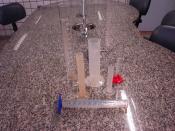Abstract
"Conservation is the realization that if nothing is added or taken away, amount stays the same regardless of any alterations in shape or arrangement." There were 4 sections for this experiment: volume, mass, number, and length. Each section had 4 questions provided for the participants. The first two questions would be "Are you a boy or a girl?", and "How old are you?" for each section. And then the interviewers would ask them if the 2 objects or sets of object were the same or different. For example, "which glass has more liquid?", and "which row has more blocks?". After the interviewer had asked them the questions, they put down either "S" - same, or "D" - different on the appropriate age section, and sex section.
The Development of Understanding Conservation
The main purpose of this experiment is to show that, for children, the objects may look different when they are changed to a different shape or position.
This is due to the fact that their thinking does not develop entirely smoothly - especially, young children under the age of 7. Before starting this experiment, the experimenters thought that males would develop the concept of conservation slower than females.
Method
Participants
For this experiment, 6 different grades of students from the age of 6 to 11 were our participants which they were both males and females. About 70 students participated this experiment. They were sent a permission form to their parents, which they had to return them back to the teacher.
Apparatus
Two 500mL glass beakers, a 100mL graduated cylinder, and 100mL colored water in each beaker were used for volume conservation. Two uncrumpled sheets of paper were used for mass. Eight blocks were used for number conservation. Each of them was 8.5cm x 2.8cm x 1.7cm colored...


